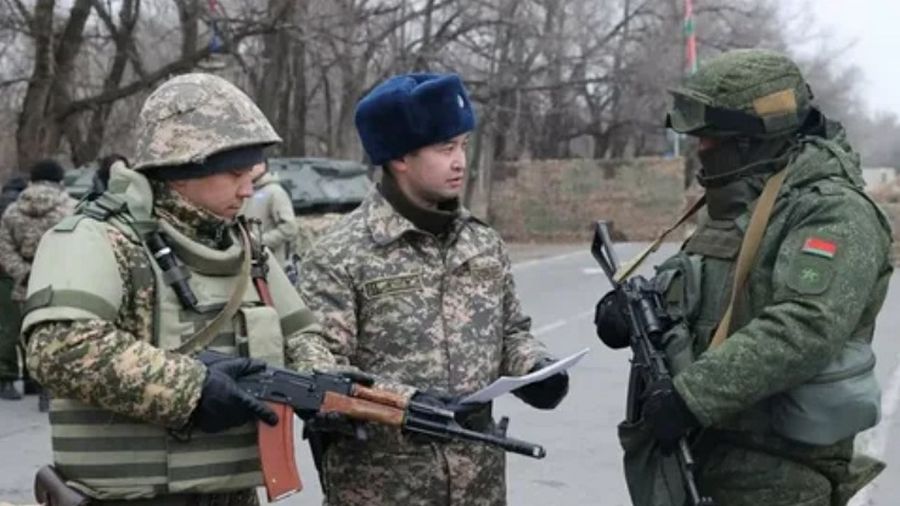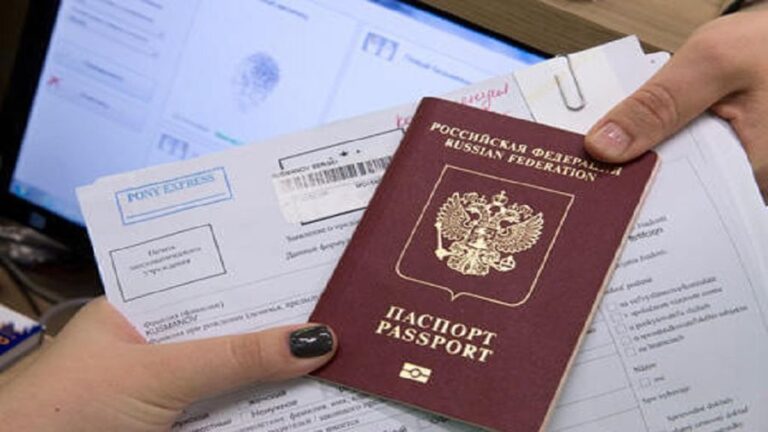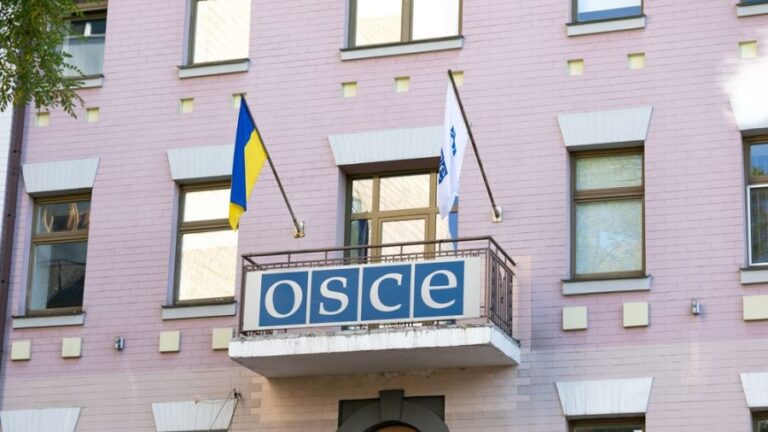CSTO is a True Defender of the Interests that Regional Players Share
The recent developments in Kazakhstan and the role of the Collective Security Treaty Organization (CSTO) in assisting that country’s authorities in establishing order and security have particularly brought into sharp focus the importance of this regional interstate organization.
The CSTO was established in 2002 on the basis of the Collective Security Treaty of May 15, 1992. It currently includes Armenia, Belarus, Kazakhstan, Kyrgyzstan, Russia, and Tajikistan. The total population of the countries that make up the CSTO totals almost 200 million people.
The treaty was the first attempt to create a system of collective security in the post-Soviet space. It was not meant to establish a military bloc, but rather to provide a mechanism for coordinated action to ensure the collective security and territorial integrity of participating countries. Since 2004, the organization has had observer status at the UN General Assembly.
The stated objectives of the CSTO include “strengthening peace, international and regional security and stability, protection on a collective basis of independence, territorial integrity and sovereignty of member states, the priority in achieving which is assigned by the member states to political means.” The treaty has nothing directed against third-party countries. It does not affect the rights and obligations of the CSTO members under bilateral agreements, nor does it affect the right of the member states to individual and collective defense against aggression under the UN Charter.
Military and political relations between the states of the association have priority over military ties and contacts with third-party countries. Military bases of states that are not members of the organization can only be deployed on the territories of CSTO members with the consent of all partners in the bloc. CSTO members cannot enter into military alliances with third-party countries, nor can they participate in actions against other countries of the organization. Aggression against one of the CSTO members (an armed attack that threatens security, stability, territorial integrity and sovereignty) is considered aggression against all members of the Treaty. The organization also has a mechanism of military and technical cooperation, which provides for the supply of military products to member countries at reduced prices, the training of personnel for the armed forces and security forces of the CSTO member states on a free and preferential basis.
The CSTO collective security system includes the Collective Rapid Reaction Force (about 18,000 people), peacekeeping forces (3,600), the Collective Air Force (CAS), as well as regional groups: Collective Rapid Deployment Forces in Central Asia (Central Asian Rapid Deployment Force – about 5,000), as well as Eastern European (Russia and Belarus) and Caucasian (Russia and Armenia) groupings. These structures are all included in the unified forces of the organization, known as the Collective Forces, the decision to create which was made on December 19, 2012.
In 1996 and 1998-2000, the Treaty member states provided military and technical aid (supplies of military equipment, weapons, ammunition, uniforms) and political assistance through the Foreign Ministries to Uzbekistan and Kyrgyzstan in connection with developments in Afghanistan in the immediate vicinity of the borders of the Central Asian states. In June 2010, Kyrgyz President Roza Otumbayeva appealed to the CSTO following aggravation of the internal political situation caused by the interethnic conflict between the Kyrgyz and Uzbeks in the south of the republic. On May 14, 2021, acting Armenian Prime Minister Nikol Pashinyan formally appealed to the CSTO with a request to begin consultations in accordance with Article 2 of the Treaty, after the Armenian Defense Ministry reported on May 12 that the Azerbaijani armed forces crossed the state border of the republic, going as far as 3.5 km deep. After the territory of Afghanistan was almost completely taken over by the Taliban (banned in Russia), on July 7, 2021, Tajikistan asked the CSTO to help strengthen security on the border with that state.
On January 5, 2022, Kazakh President Kassym-Jomart Tokayev appealed to the heads of CSTO countries for help to the republic, where mass riots broke out on January 2. Tokayev considered the events in Kazakhstan an “act of external aggression” and blamed the events on “terrorist gangs” trained abroad. On January 6-8, the Peacekeeping Forces of Russia, Armenia, Belarus, Kyrgyzstan and Tajikistan were assigned to Kazakhstan, and on January 9, the peacekeepers completed their deployment in the republic and commenced operations to carry out their assigned tasks. According to the CSTO, the peacekeeping unit strength amounted to about 2,500 people and 250 vehicles. The main tasks of the CSTO Peacekeeping Forces in Kazakhstan were to protect critical state and military facilities, assist the country’s law enforcement forces in stabilizing the situation and returning it to the rule of law. Over the course of this peacekeeping mission, the CSTO was in constant communication with the defense ministries of the countries that had sent troops to Kazakhstan, and the CSTO Crisis Response Center organized a 24-hour exchange of information on the unfolding situation with the command of the collective peacekeeping forces and the defense ministries of the member states of the Organization.
At present, the crucial phase of the first-ever CSTO peacekeeping operation involving military personnel from all six CSTO member countries is coming to an end, and the transfer of facilities protected by peacekeepers to the law enforcement agencies of Kazakhstan is being prepared. The phase of the anti-terrorist operation in the republic has passed, and the situation in all regions is now considered stable. As Russian President Vladimir Putin announced at the summit of CSTO heads on January 10, the entire contingent of CSTO peacekeepers will definitely be withdrawn from Kazakhstan after the fulfillment of their functions. With the key mission of the CSTO peacekeeping forces successfully completed, the withdrawal of peacekeepers from Kazakhstan will begin in the next few days. It was emphasized that the CSTO was able to make quick and coordinated decisions in order to prevent the situation from deteriorating and bring it under control.
At the same time, the highly critical reaction of a number of NATO countries to the quickly implemented CSTO operation in Kazakhstan draws particular attention, which further confirms the explicit involvement of such states in the aggravation of the situation around Kazakhstan and therefore the frank dissatisfaction with the disruption by the CSTO of these malicious plans. This irritation and anger in the West at the professional and legitimate mission of the CSTO forces in Kazakhstan was pointed out by Russian Foreign Ministry spokesperson Maria Zakharova. In particular, she noted the incompetence of those who accuse the CSTO of illegitimate actions, noting that the possibility of military assistance to participants of the organization was initially provided for in the Treaty. “The West has not read the Collective Security Treaty, which stipulates precisely what they are most concerned about. Except that it was stipulated as of 1992, which means that those relations of support for each other, including those involving the armed forces, were established immediately after the countries gained their independence,” Zakharova stressed.
In spite of this, however, CNN correspondent Fred Pleitgen published a reluctantly positive reaction to the CSTO operation on January 9, emphasizing that Putin came out of the Kazakhstan case stronger than he had been before, and that Russia had also demonstrated in this incident that it can mobilize a large number of forces efficiently and quickly.
Although the CSTO operation in Kazakhstan is not yet fully completed, certain conclusions can already be drawn today. The first is that the CSTO has officially confirmed its actual function of protecting the interests of the countries of the region and its readiness to mobilize the necessary forces in the shortest possible time to repel an external enemy, no matter how numerous and insidious he may be. The operation itself has raised the status of the Organization in the region, especially given past criticism of the CSTO for not adequately addressing the escalating conflict between Armenia and Azerbaijan or the change of power in Kyrgyzstan. Considering that there have never been any operations involving the actual deployment of large troops in such a delicate situation before, it is safe to say that the status of the CSTO has been consolidated. Indeed, the Organization has shown itself to be a well-functioning system that is able to stand up for itself, and is worthwhile to cooperate with and take advantage of its opportunities and perspectives.
In these circumstances, this author cannot rule out the possibility of an expansion of the list of CSTO members, in particular by the return of past members of the association, such as Uzbekistan and Azerbaijan. In particular, Tashkent may be prompted to do so by the deteriorating situation in the region and in the Afghan direction, and Baku by its growing tiredness of dealing with Turkey.
A very important factor that favored the CSTO mission was the position taken by the Chinese side, as well as the SCO as an organization that includes both Kazakhstan, China, and Russia. This is clear evidence of the link between the CSTO and the SCO, and, given the Russian-Chinese leadership of the latter, of the close coordination between Moscow and Beijing that has taken place on the issue of Kazakhstan. So in the situation of the events in Kazakhstan, not only the CSTO, but also the SCO was tested, and a new, truly strategic level of Russian-Chinese partnership was achieved.
It should also be noted that the provocation unleashed by the West in Kazakhstan in early January, in the apparent hope of weakening Russia’s position on the eve of its complicated security negotiations with the United States and NATO, actually played into the hands of Moscow. After all, the CSTO operation was a sobering experience, not only in the confrontation with the West, but also in strengthening the positions of Russia and the CSTO in Central Asia as a whole, and in influencing the further geopolitical situation in Asia. In the near future, it could encourage not only the post-Soviet republics, but also countries such as China, India, Afghanistan, Pakistan, Iran and others to join this organization, leading to the emergence of a new global power bloc.







